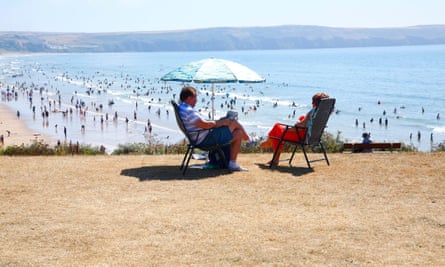It’s proving to be a bumper year for wasps but if it wasn’t for the long, hot summer numbers would have been considerably below average.
Hibernating Queen wasps require cold, dry conditions to successfully endure their six-month hibernation, followed by a prolonged spell of warm, dry weather in spring as they construct their nests and rear their first workers. Instead, much of the country received record rainfall, followed by ice, snow and very low temperatures.
The few wasp colonies that managed to survive this combination were then presented with ideal conditions for maximum growth rate: high temperatures, little or no rain and abundant food over an extended period.
So with wasps in abundance, how can you ensure they don’t ruin your picnic?
It’s a common misconception that wasps are more aggressive than bees. In fact, they appear so simply because their food requirements mirror ours. Honeybees and bumblebees are herbivores blessed with long tongues, so they can obtain everything they need from flowers: pollen for protein and nectar for carbohydrate. They rarely bother us.
Wasps, on the other hand, are omnivores with short tongues. Like bees, they need sweet carbohydrates as their energy source, but the nectar in most flowers is inaccessible to them.
Unlike bees, they get their protein from meat, mainly in the form of insects, spiders and other arthropods. However, catching their prey requires skill and seven times out of 10 they miss, so wasps will take the easy option whenever possible. What better, then, than a picnic to provide a wasp with fast food?
This is where the conflict begins. Wasps have an extremely sensitive sense of smell and taste, so even the slightest trace of food on our skin can prove attractive, on top of the lure of our own human odour – we are made of meat, after all.

I discovered that wasps sting in two very different situations. The first is when a wasp is foraging for food, normally some distance from its nest. In this case the sting is in self-defence and other wasps don’t get involved. In my experience, you will only get stung in these circumstances if you physically attack the wasp or if it crawls into your clothing and you move.
If a wasp lands on you, don’t flap at it or try to brush it off – it will sting you. Just stay still and let it fly off in its own time. A wasp trapped in clothing is more difficult to deal with because any slight movement can press garments against it. So, if you can bear it, stay very still and let the wasp find its own way out.
The second situation is much more serious. If you happen to be within three metres of the nest and you’re stung, other wasps may swarm in to attack, attracted by a chemical in the wasp venom. This alarm pheromone is a highly effective deterrent, designed to steer predators quickly away from the all-important wasp colony.
So, what should you do if you inadvertently disturb a nest? My research showed that, though the smell of the pheromone will cause more wasps to home in, other stimuli play a part too. The fiercest attacks are on dark-coloured, jerkily-moving objects close to the nest. Wasps learn to recognise the landmarks near their colony, but only defend it out to about three metres. If you are wearing white, yellow or another pale colour, the chances of further stings are significantly reduced. In addition, if you can bear to move slowly and smoothly out of that three-metre radius rather than flapping wildly, you’ll probably get away with just that single sting.
Contrary to popular belief, about 70% of wasp nests are found underground, so it’s a good idea to wear white when gardening. Some species suspend their nests in trees and shrubs, so be careful to check before you prune. As for nests in attics, if the wasps aren’t bothering you, leave the nests where they are. Each nest is annual and the colony dies out before winter. As no nest is ever used again, leaving it in situ prevents other wasps from using the space – and it’s excellent insulation for your roof too.
Wasp traps are a good idea. No need to buy them – the traditional jam jar with a hole pierced in the lid is perfect. Just fill to halfway with water or beer and a smelly attractant like jam or ginger syrup (wasps love this), add a few drops of washing-up liquid so the wasps drown immediately and you’re bound to reduce their numbers. The more traps you place, the better.
Just remember these rules and the next time you and a wasp have a stand-off at a barbecue, you’ll be the winner.
